Green Monster Soup with Za’atar Toasted Sunflower Seeds
I love a good bowl of soup anytime of the year, but I tend to eat a lot more soup during the cold winter months. Usually people tend to think of soup as the kind of dish where they can throw in as many vegetables as they have lying around in the fridge. I tend to think the opposite actually, and like to take a “less is more” approach when it comes to soup making.
This soup in particular is made with three different greens (spinach, cabbage and turnip tops) and has sweet potatoes and a little amount of rolled oats in it to make it creamier and balance the greens’ natural bitterness. There’s also ginger for some heat, and a crunchy seed topping to keep things exciting. I usually make this soup using solely cabbage and chard, but I couldn’t find the latter this week on the market, so I just replaced it with spinach and turnip greens.
Turnip greens are very easy to find in Portugal, but my (little) travel experience tells me it’s not an ingredient that’s easily available in other parts of Europe. If you can’t find them, use chard instead. I’d just advise you against making this an all spinach soup – maybe it’s just me, but I find spinach a little bitter (specially the new Zealand variety, which is the one I’ve used here) and that’s why I like to pair it with another green partner. I want to thank all of you who visit this blog regularly and wish you a wonderful new year. I’ll be back soon. In the meantime, eat your soup! :)
Green Monster Soup with Za’atar Toasted Sunflower Seeds
serves 4
For the soup:
2 Tablespoons olive oil
230 g / 1 large thinly sliced onion
5 garlic cloves, minced
23 g fresh ginger, peeled and grated
240 g / 2 medium sweet potatoes, diced
225 g / half a medium sized cabbage, thinly sliced
25 g / ¼ cup rolled oats
5 cups water
225 grams spinach leaves
180 g turnip greens
¾ teaspoon salt
½ teaspoon freshly ground nutmeg
For the za’atar toasted sunflower seeds
55 g /1/3 cup sunflower seeds
1 teaspoon olive oil
1 teaspoon za’atar
extra olive oil, lemon juice and za’atar for serving
For the za’atar toasted sunflower seeds: In a small bowl, combine the sunflower seeds with the oil and za’atar. Transfer the seeds to a skillet over medium-high heat and toast until they’re golden and fragrant (about 5 minutes). Reserve.
For the soup: In a large pot over medium heat, add the oil, onion, garlic and ginger and cook for 10 minutes, or until the onion has softened. If the vegetables dry out during this time, add a few tablespoons of water to loosen things up.
Next add the diced sweet potatoes, cabbage, rolled oats and 5 cups of water. Bring the soup to a boil and, once boiling, decrease the heat to medium. Cover and cook for 10 minutes or until the vegetables are cooked through.
Finally add the spinach and turnip greens as well as the salt and freshly ground nutmeg. Cook for additional 5 minutes, or until the spinach and turnip greens have shrunk considerably.
Transfer the soup to the bowl of a food processor. Working in batches, puree the soup until it’s creamy and smooth. Serve with plenty of za’atar sunflower seeds on top, an extra dizzle of olive oil and a squeeze of lemon juice.
Roasted Carrot & Black Bean Salad with Orange Cinnamon Dressing
I don’t share the enthusiasm most people have for Christmas. My close family is very small and I’m with them all year around, so gathering for an occasion I personally couldn’t care less about (I respect all religions, but I’m not a religious person) just seems a bit pointless. Having said this, it doesn’t come as a surprise that I don’t bother cooking a big, impressive meal for Christmas Eve. In fact, I cook the same kind of food I do everyday, like this little carrot and black bean salad.
This dish is easy to pull off and it’s packed full of good things for you. It’s also perfect for this time of the year when, after the carb and sugar filled holidays, people seek to lighten up their eating. You can also adapt the ingredients, like substituting the black beans for chickpeas or even the carrots for sweet potatoes. The dressing is very fragrant and gives an exotic edge to the salad too. After cooking my way through Plenty More these last couple of weeks, I borrowed some ideas from Ottolenghi, and one of those is adding spices to salad dressings, like cinnamon and/or fennel seeds.
I wish you guys a wonderful new year, and I’ll come back by the end of the week with one of my favourite soup recipes –keeping the mood light and clean. ;)
Roasted Carrot & Black Bean Salad with Orange Cinnamon Dressing
serves 2
For the salad:
645 g / 10 medium sized carrots, peeled and left whole
1 teaspoon cumin seeds, crushed
1 ½ teaspoon coriander seeds, crushed
1 tablespoon olive oil
270 g / 1 ½ cups cooked black beans (canned is fine)
20 grams chopped parsley
20 grams chopped mint
20 grams chopped coriander
30 grams / ½ small red onion, finely diced
1 medium avocado, thinly sliced
salt and pepper to taste
For the orange cinnamon dressing:
zest of one large orange
3 tablespoons olive oil
2 tablespoons lemon juice
1 small garlic clove, minced
¼ teaspoon cinnamon
salt and pepper to taste
Preheat the oven to 180º. Line a baking tray with non-stick baking paper. Combine the carrots with 1 tablespoon of olive oil and the cumin and coriander seeds. Add a generous pinch of salt and pepper, toss, and roast in the oven for 45 minutes or until the carrots have cooked through and are lightly brown.
Mix the remaining ingredients for the salad in a large bowl, and add the carrots on top. Combine the ingredients for the dressing and drizzle over the salad. Serve immediately.
Lentil and Mushroom Salad with Sumac Lemon Dressing
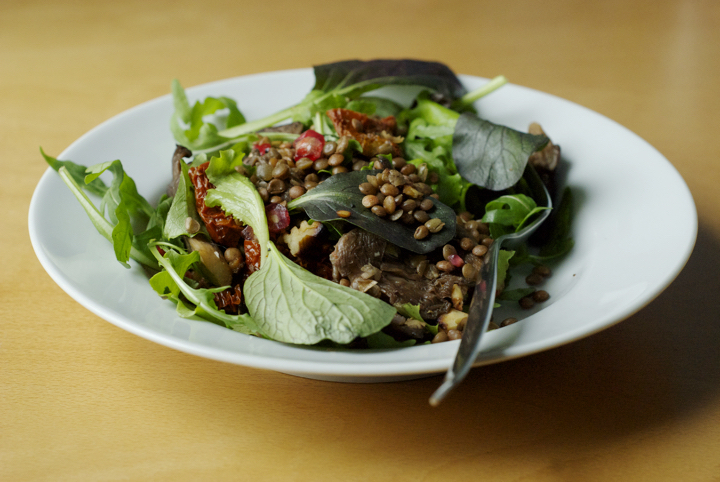 When the weather starts getting colder, I eat soups and stews for the most part of my meals. However though, salads are still welcomed, as long as they’re heartier and incorporate some cooked elements.This salad makes for a perfect, quick lunch anytime of the week. I’ve made it countless times and sometimes substitute the lentils for whole grains such as barley and bulgur and it tastes delicious as well.
When the weather starts getting colder, I eat soups and stews for the most part of my meals. However though, salads are still welcomed, as long as they’re heartier and incorporate some cooked elements.This salad makes for a perfect, quick lunch anytime of the week. I’ve made it countless times and sometimes substitute the lentils for whole grains such as barley and bulgur and it tastes delicious as well.
One thing you should pay attention to when making this dish is not to overcook the lentils. There’s nothing worse than mushy, soft lentils. To avoid this, cook them for no longer than 15 minutes and they’ll be perfect. As far as the dressing goes, sumac is it’s key component, so please don’t skimp on that. I’ve first found out about sumac one or two years ago when I decided to make my own za’atar. It’s a hard to find and reasonably pricy spice here in Portugal (although some speciality stores sell it these days), but you don’t need to use much to feel its tangy and lemon-y flavour. I hope you enjoy the salad and the start of the new season! Have a good weekend :)
Lentil and Mushroom Salad with Sumac Lemon Dressing
(serves 4, as a starter)
105 g / ½ cup brown lentils, washed, drained and picked through
1 Tbs. olive oil
2 medium garlic cloves, crushed
300 g pleurothus mushrooms
50 g / 8 halves oil packed sundried tomatoes, roughly chopped
50 gr walnuts, toasted and roughly chopped
2 big handfuls / 40 g salad leaves such as rocket, baby spinach, etc.
105 g/ ½ cup (packed) pomegranate seeds
for the sumac lemon dressing:
1 ½ tsp. sumac
3 Tbs. lemon juice
60 ml / ¼ cup olive oil
1 small garlic clove, minced
salt and pepper to taste
In a small pan over medium-high heat, add the lentils and 2 cups of water. Bring to a boil and, once boiling, reduce the heat to low-medium and cook for 14-16 minutes or until tender but still al dente. Add ½ teaspoon of salt to the lentils, stir everything, and drain. Add the lentils to a large bowl and reserve.
Heat a large skillet over medium-high heat and add 1 tablespoon of oil. Once the oil is hot, but not smoking, add the mushrooms and garlic cloves and cook for 5-8 minutes or until golden brown. Add a pinch of salt and pepper as soon as they’re cooked, remove the garlic, and add them to the bowl with the lentils.
Add the sundried tomatoes, walnuts, salad leaves and pomegranate seeds to the bowl with the lentils and mushrooms and toss everything together gently.
For the dressing, mix all the ingredients in a small glass jar. Cover the jar with the lid and agitate vigorously until everything’s combined. Pour the dressing over the salad (not all of it – 3 to 4 tablespoons should be enough) and serve immediately.
Red Lentil and Cauliflower Stew
As I’ve mentioned here countless times, autumn is my favourite season. Unlike most people, I like cold weather and absolutely love one-pot and soul warming stews and soups. This stew in particular is the kind of dish I often cook when colder days arrive, as it’s quick to make and I most likely already have all the ingredients I need for it in the pantry.
It’s also very versatile: sometimes I use zucchini in place of the cauliflower and, even though I prefer the latter, it tastes lovely too. Other times, I substitute the water for coconut milk (or half of the amount of water) for a richer, creamier version. As with most curries and stews, this one tastes better the day after it’s made. The recipe below makes plenty of food, so I’m sure you’ll end up with leftovers for the next meal. I also really like to serve this dish with steamed brown rice (to soak up the sauce) and plenty of toasted cashews on top.
Red Lentil and Cauliflower Stew
(serves 4 to 6)
1 teaspoon cumin seeds
1 teaspoon coriander seeds
1 teaspoon mustard seeds
4 garlic cloves, minced
2 Tablespoons olive oil
1 medium red chilli, finely chopped
210 g / 1 cup red lentils
375 ml / 1 ½ cups chopped canned tomatoes
500 ml / 2 cups water
175 g / 3 medium carrots, cubed
350 g / 1 medium cauliflower, cut into florets
salt and black pepper to taste
In a dry skillet over medium heat, toast the seeds for 5-6 minutes or until fragrant and lightly toasted. Transfer the seeds to a mortar and pestle and mash them until they’re finely ground.
In a medium-sized pan over medium heat, heat the olive oil. Add the garlic, chilli, spices and carrots and fry for 1 minute or 2. Now add the lentils, canned tomatoes, water and cauliflower and bring the mixture to a boil. Once boiling, reduce the heat to low-medium, cover the pan and cook for 25-30 minutes or until the vegetables are tender. At the last minute of cooking, add the salt (start with ½ teaspoon, taste, and increase if you need) and black pepper.
Vegan Tiramisu
For a long time I wanted to make a vegan version of Tiramisu, the classic Italian dessert. However, though, that required some planning as I had to make the cake or cookie base from scratch, and because I’m usually not so go at planning recipes ahead of time, I kept postponing and almost forgot about it. Almost.
The other day I was reminded of my Tiramisu mission while having dinner with my dutch friend Anne-Marie, who came to visit me here in Porto. We went to an Italian restaurant I particularly like and she ordered Tiramisu for dessert. We brainstormed a bit about what would be the best approach to veganize it (Anne-Marie is the ultimate Tiramisu connoisseur), and came to the conclusion that, instead of trying to mimic the regular version, by using whipped soy cream and the likes instead of the dairy cream, the focus should be on the core flavours and textures of Tiramisu: coffee, Amaretto and biscuits.
The creamy component of this dish is made by combining silken tofu and coconut cream, and I can guarantee you it’s quite a subtle combo, where you won’t either taste the tofu or be overwhelmed by the coconut flavour. As far as the biscuit part goes, I made a simple almond and amaretto cake that is then cut into thick slices and soaked with coffee. The final result is quite pleasant, not overly sweet and light in texture. Unfortunately, by the time I was making this dessert Anne-Marie have already returned home, but I’m positive she would give her approval. Guess I’ll make it next time we meet, we always happen to come up with creative food ideas when cooking together ;)
Vegan Tiramisu
(serves 6-8)
For the Almond Amaretto Cake:
Dry ingredients:
175 g / 1 ½ cups almond meal, slightly toasted in a dry skillet
270 g / 2 cups white spelt flour
¼ teaspoon fleur du sel
2 Tbs. flaxseed meal
1 ½ tsp. baking powder
Wet ingredients:
½ cup + 2 Tbs. brown rice syrup
125 ml / ½ cup soya or almond milk
2 Tbs. Amaretto
1 tsp. lemon juice
60 ml / ¼ cup olive oil
granulated brown sugar (1 to 2 Tbs.) and extra oil for coating the pan
For the Coffee Sauce:
185 ml / 3/4 cup boiling water
2 Tbs. coffee granules
2 Tbs. brown rice syrup
For the Coconut and Tofu Cream:
2 cans /400 ml full fat coconut milk, turned upside down and refrigerated overnight
1 package / 300 g silken tofu
1 vanilla bean, split lengthwise, seeds scraped and added to the bowl of a food processor
5 Tbs. brown rice syrup
1 Tbs. Amaretto
cocoa powder for coating
Pre-heat the oven to 180ºC.
To make the cake: In a large bowl, combine all the dry ingredients for the cake except the flaxseed meal. In another bowl, whisk together the wet ingredients along with the flaxseed meal. Put the wet mixture over the dry one and mix everything until a thick batter comes together.
Grease a rectangular baking dish with olive oil and coat it with the granulated brown sugar. Add the cake batter, smooth the top with the back of a spoon, and bake in the pre-heated oven for 35 to 40 minutes. Let the cake cool in the pan for at least 1 hour before unmolding and slicing.
To make the coffee sauce: In a heat resistant bowl, whisk the boiling water with the coffee granules and brown rice syrup until thoroughly combined.
To make the coconut and tofu cream: Open the coconut cans and discard the water (you only want the creamy part). Simply put all the ingredients in the bowl of a food processor and run the machine until the mixture is smooth and creamy.
To assemble: Cut the cake into 14-15 slices (they will be about 1cm thick). Add 5 of the cake slices to the bottom of a rectangular pan and cover them with half of the coffee sauce. Add half of the cream mixture on top of that, followed by 5 more cake slices and the remaining coffee sauce. Finally, cover with the remaining cream mixture.
Refrigerate the tiramisu for at least 24 hours. I like mine well chilled, almost frozen, so I cover the pan with cling film and put it in the freezer for 1-2 hours before serving (but only after it has chilled in the refrigerator). Dust the tiramisu with cocoa powder and serve.
Lentils with Carrot Purée, Caramelized Onions and Hazelnut Mustard Dressing
I know a lot of people who find lentils boring and bland in flavour, and most of the time is because they’ve eaten them overcooked and without exciting accompaniments. I can eat a lot of lentils – typically 2 or 3 times a week – and the reason I’m a huge fan of them (both flavour and nutrition-wise) is because there are so many possibilities when it comes to incorporate them in a dish.
The other day I made a big batch of carrot purée because I needed some to bake a cake. I ended up eating the leftovers – properly seasoned with garlic and olive oil – for dinner along with (also leftovers) lentils and some quickly sautéed onions. I thought the three components got along pretty well, and decided to further explore the idea in order to come up with a recipe worth sharing here on the blog.
This dish might seem like it has a lot of elements but they actually come together pretty quickly and require ingredients you most likely already have in your pantry. What I like about it is that not only it tastes really good but also makes a nutritionally balance main course, which sometimes, for people new to vegan or vegetarian ventures, is hard to achieve with plant-based ingredients.
Hope you like the lentils, enjoy the last days of summer and warmth and fully embrace the next season. Fall is my favourite of all four seasons, and I love the flavours and produce that comes with it. No wonder it’s the time I’m the most inspired to cook and bake, and hopefully I’ll come up with some new creations that will delight your eyes and palate. See you all soon! (: J
Lentils with Carrot Purée, Caramelized Onions and Hazelnut Mustard Dressing
(serves4)
1 ½ cups french lentils, such as Puy
½ teaspoon salt
1 big handful parsley (22 g), finely chopped
for the carrot purée:
510 g (8 to 10) medium sized carrots, cubed
¼ teaspoon salt
1/8 teaspoon ground cinnamon
½ teaspoon freshly ground black pepper
squeeze of lemon juice
for the caramelized onions:
600 g (4 large) onions, finely sliced into rings
½ teaspoon salt
2 tablespoons olive oil
for the hazelnut-dijon dressing:
47 g / 1/3 cup hazelnuts
1 tablespoon Dijon mustard
2 teaspoons brown rice syrup
¼ teaspoon salt
4 tablespoons olive oil
4 tablespoons red wine vinegar
2 tablespoons water
arugula leaves, micro herbs etc., to serve
Carrot purée: Using a steamer, steam the carrots for 8-10 minutes or until they’re cooked through. When they’re cool enough to handle, add them to a food processor with the remaining ingredients for the purée and blend until it reaches a smooth consistency. Adjust the seasoning, adding more salt if necessary. If the mixture seems too thick and you’re having trouble mixing it all together, add up to 6 tablespoons of the water you used for steaming the carrots.
In the meantime, bring a medium sized pan filled with 4 cups of water to a boil. Add the lentils, reduce the heat to medium and cook for approximately 12-14 minutes, or until they’re cooked through but still have some bite. Add the salt, drain the lentils and rinse under cold water. Transfer the lentils to a bowl and mix in the chopped parsley.
Caramelized onions: Heat a large non stick skillet over medium heat and add the olive oil, onions and salt. Cook, stirring often, for about 15 to 20 minutes, or until the onions are really soft. In the last minutes of cooking, turn the heat up to high and cook for additional 3 to 4 minutes, or until they crisp up a little.
Hazelnut mustard dressing: In a skillet over medium-high heat, toast the hazelnuts until they’re golden brown (4 to 5 minutes). When they’re still hot, transfer to a clean kitchen towel and rub them against it to remove as much of its skin as possible. Transfer the hazelnuts to a food processor and process until smooth with the remaining dressing ingredients.
To serve, put a few tablespoons of carrot purée on 4 different plates, topping with the lentils, followed by the caramelized onions and a gentle drizzle of the hazelnut dressing. Add a few arugula leaves, if desired, and serve.
Coconut, Roasted Banana and Passion Fruit Tart
I live in an apartment and therefore do not have any available outdoor space to grow vegetables and fruit (the balcony doesn’t count). However, though, I’m lucky enough to have friends who, knowing my obsession with food and natural produce, occasionally bring me goodies from their gardens. This time around, my dear friend Filipa has brought me tons of thyme, an extra large zucchini (they’re everywhere around this time of the year, aren’t they?) and a bag full of passion fruit.
I knew straight way what to do with the first two ingredients (a huge batch of za’atar with the thyme, and a simple zucchini and apple soup), but I struggled with the latter. I’ve never been a huge fan of passion fruit, but knowing how outstanding it looks on desserts, specially cheesecakes and the like, I decided to make a tart with it. I approached it the way I usually do with vegan cheesecake-y desserts – I’m not a fan of using tofu, so the filling was coconut and banana based, firmed up with the help of Mr. Agar. I was very happy with how it turned out, specially because the filling had just the right texture – not too firm, but not too jiggly either. Eaten cold, I dare say it was probably the best dessert I’ve made this year.
Coconut, Roasted Banana and Passion Fruit Tart
(serves 8)
for the crust:
1 cup sunflower seeds
1 1/2 cups oat flour (gluten free or not)
2 Tbs. flaxseed meal + 1/4 cup water
1/3 cup brown rice syrup
1/4 tsp. fine grain sea salt
1/4 cup coconut oil, melted
for the filling:
400 ml /2 cans full fat coconut milk
2 tsp. agar agar flakes
1/3 cup brown rice syrup
1 vanilla bean, split lengthwise, and seeds scraped
2 Tbs. tapioca starch
5 Tbs. water
for the passion fruit sauce:
6 medium sized passion fruit
3 Tbs. brown rice syrup
1. Pre-heat the oven to 180ºC/350F. Line two small trays with parchment paper. Add the banana, unpeeled, to one of the trays, and the sunflower seeds to the other. Put the trays in the oven and roast the seeds for 10-15 minutes (redistribute them halfway through, so they’re evenly toasted), and the banana for 5 minutes longer. Take the trays out of the oven and let the seeds and banana cool down.
2. When the toasted seeds are cool enough to handle, add them to a food processor and process until finely ground. In a large bowl, add the seeds, oat flour and salt. In another bowl, add the flaxseed meal along with 1/4 cup of water. Mix well and add the coconut oil and brown rice syrup, stirring everything together until thoroughly combined. Add the wet mixture to the dry one and mix until a firm dough comes together. If the dough seems wet, add a little more flour. Basically, it’s perfect as long as it doesn’t stick to your hands or the bowl.
3. Lightly oil a 33 x 9 cm non stick pie pan and, with your fingers, press the dough into it. Cover it with parchment paper, add some beans or pie weights and blind bake for 20-25 minutes, or until the edges of the tart are golden brown.
4. While the crust is baking, make the filling. In a small bowl, whisk together the tapioca starch and 5 Tbs. of water until well combined. In a small pot over low-medium heat, add the coconut milk, agar agar flakes, vanilla seeds and brown rice syrup. Whisk the mixture constantly for about 8 minutes. Now, add the tapioca mixture to the pot and whisk for additional 2 minutes, or until the liquid has thickened.
5. Unpeel the banana and add it to a blender or food processor. Add the coconut milk mixture and blend until smooth. Add the filling to the previously baked crust. Let it cool to room temperature and refrigerate for at least 2 hours before serving.
6. Right before serving, cut the passion fruit in half and extract their pulp with a spoon to a bowl. Add the brown rice syrup and stir to incorporate. Drizzle the sauce over the tart and serve.
Curried Beans with Naan Bread
As much as I like to cook, I don’t think I could manage the demands of running a restaurant or a café. I love to cook to small groups of people, but more than ten and I start to stress out. I’m also kind of slow in the kitchen, and adding up to that, I hate to delegate tasks. Even though the idea of having a place of mine – with my food, my kind of atmosphere, and so on – sounds appealing, I’m sure it will never see the daylight because of the reasons mentioned above. However, though, that doesn’t stop me from thinking about the dishes I’d like to serve in my little imaginary café, and this one would certainly be a regular on the menu.
It’s simply beans flavored with a spicy curry paste and served with warm charred naan, to whip up the sauces – the kind of food I could eat everyday. The naan is made with both wheat and spelt flours, and you can flavor it in way you like – by adding cumin seeds, garlic, chili powder, and so on. I wanted to make a 100% spelt naan but couldn’t find white spelt flour, so had to compromise and make a wheat and whole spelt version instead. However, though, next time I find it I’ll make the bread again and update this post with how it turned out. A few words on the measurements: I always like to have all the ingredients for each recipe weighted into grams (it’s way more accurate than cups), but my scale has been having some sort of identity crisis and only gives me the weights in pounds. I was a bit lazy and didn’t want to go into the trouble of weighting things down and then make the conversions, but if the scale doesn’t change its mind soon, I’ll buy another one and reintroduce the proper metric measurements.
Curried Beans with Naan Bread
(serves 4)
for the naan bread:
1 cup wheat flour
1/2 cup whole spelt flour
1/2 cup warm water
3/4 teaspoon active dry yeast
1/4 teaspoon salt
2 teaspoons brown rice syrup
1 teaspoon olive oil
optional: cumin seeds, thyme, chili flakes, coriander…
for the curried beans:
4 cups red beans (canned is fine)
3 large garlic cloves, finely chopped
2 tablespoons melted coconut oil
3 tablespoons chopped canned tomatoes
1 large fresh green chili, finely chopped
1/2 teaspoon salt
2 teaspoons coriander seeds
1 teaspoon fenugreek seeds
1 large lemon (cut into 4 wedges) and chopped avocado for serving
To make the naan bread: Add, to a medium bowl, the water, yeast, salt, brown rice syrup and olive oil, and whisk everything together. In another bowl, combine the flours. Add the yeast mixture to the bowl with the flour and knead until you have a firm, yet soft to the touch, dough. If the dough is too wet, add more flour until you reach the right consistency. Cover the bowl with a clean kitchen towel and leave it in a warm place to rise for 2 hours.
Heat a large grilling pan over medium-high heat. Dust a working surface with flour and add the proofed dough. Knead for a couple of minutes and divide it into 4 equal parts. Roll each ball of dough into a not too thin elongated shape and add the topping you want (if using) pressing it down gently into the dough. Brush the naan with water and add it to the grilling pan, water side down, and cover with a lid. Cook for 30-50 seconds, or until you start seeing some bubbles on it. Cook the other side for approximately the same time, or until lightly charred. Repeat this process with the remaining balls of dough.
To make the curried beans: Add all the ingredients for the curry, except the beans, to a food processor and pulse until it turns into a paste. Add the curry to a pot over medium heat and cook, stirring often to avoid sticking to the bottom of the pot, for 2-3 minutes. Add the beans, 3/4 cup of water (if you cooked your own beans use the cooking water), and cook for additional 5 minutes. Serve immediately.
Add a good squeeze of lemon juice to each serving, along with some chopped avocado and a drizzle of olive oil. Serve with the naans.
Tempeh Lemon Curry
I know I haven’t been around for a while but, hey!, I’m still here, and today we’ll talk curry. I realize this is the first curry recipe I write about on the blog, and to be honest I don’t know how that happened because it’s the kind of dish I cook often. I know there are a lot of vegetable curry recipes on the internet and that you probably don’t need another one, but I’ve made this curry countless times and think it’s a good one to have on your repertoire.
The variations in here could be endless. I’ve made it before with spinach in place of the cabbage and it turned out good, but I prefer to use the latter mainly because of the texture it brings to the whole thing. A word on tempeh: it’s well known that steaming tempeh for 15 minutes before actually cooking with it, removes its bitterness. To be honest, I don’t mind the bitterness and I think it goes practically unnoticed in here, camouflaged by the bold flavours of all the spices and the lemon. Having said this, if you want to steam it first (or even sub it for tofu), go ahead.
Enjoy the curry, have a great summer (guess what: here in Portugal has been raining) and I promise to come back soon! (:
Tempeh Lemon Curry
(serves 4)
3 Tbs. olive oil, divided
1 large onion, finely chopped
4 garlic cloves, finely chopped
1 tsp. ground coriander seeds, roughly pounded in a mortar and pestle
1 tsp. mustard seeds, roughly pounded
1 tsp. caraway seeds, roughly pounded
2 medium carrots, cut into cubes
1 Tbs. fresh ginger
1 tsp. ground turmeric
1 red chilli, finely chopped
1 large zucchini, cut into half moons
1 cup / 250 ml coconut milk
4 cups shredded cabbage
250 gr tempeh, cut into cubes
½ teaspoon
1 tsp. rice syrup
2 Tbs. mirin
zest of one lemon
1 handful toasted cashews, coarsely chopped
1 handful fresh mint, coarsely chopped
juice of ½ lemon
In a large pan over medium heat, add 2 tablespoons of olive oil, onion, garlic cloves and coriander, mustard and caraway seeds. Fry for 3-4 minutes or until the onion has softened and the spices have toasted a bit and smell fragrant.
Add the carrots, fresh ginger, turmeric, chilli and zucchini to the pan. Give everything a good stir and add the coconut milk. Cover the pan and cook for 5 minutes.
In the meantime, heat the remaining 1 tablespoon of olive oil in a frying pan over medium-high heat. When the oil is hot, but not smoking, add the tempeh cubes and fry until golden brown. Turn off the heat, sprinkle the tempeh with a pinch of salt and add it to the pan with the vegetables.
Now, add the cabbage to the pan as well, pressing it gently with the back of an wooden spoon so that it’s covered by the coconut milk. If, at this point, the curry looks as if it hasn’t enough liquid, add up to 1/3 cup of it, but keep in mind the cabbage will release a lot of water too. Cover the pan and cook for additional 5 minutes, or until the cabbage is wilted. Add the salt, rice syrup, mirin and lemon zest. Stir everything together and finish off with the lemon juice, toasted cashews and mint.
Recipe adapted from The Modern Vegetarian Kitchen, by Peter Berley, published by William Morrow Cookbooks, 2008
Bindaetteok (Korean Mung Bean Pancakes) with Sesame-Ginger Sauce
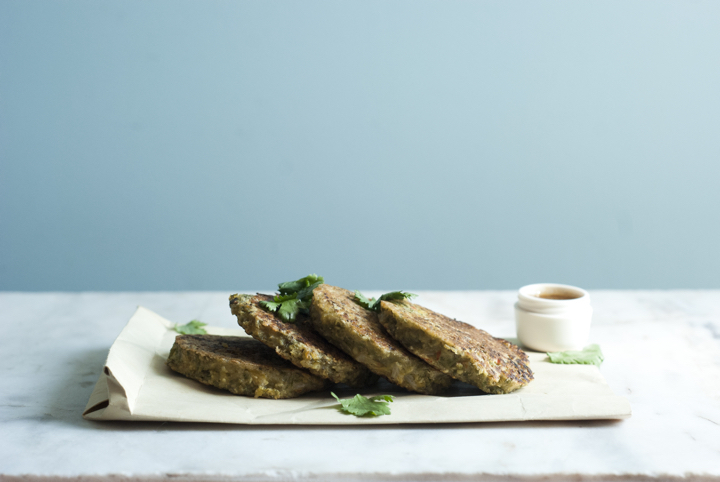 I had some friends coming over for dinner last weekend to taste some of my fermentation experiments. Amongst kimchi, sauerkraut (which will be covered soon), a sour coconut chutney and other little things, these mung bean pancakes were served. They’re not fermented per se, but do call for the use of kimchi, one of my favourite live foods.
I had some friends coming over for dinner last weekend to taste some of my fermentation experiments. Amongst kimchi, sauerkraut (which will be covered soon), a sour coconut chutney and other little things, these mung bean pancakes were served. They’re not fermented per se, but do call for the use of kimchi, one of my favourite live foods.
I looked up online for several bindaetteok recipes and they all used the same basic ingredients – dried mung beans, sesame oil, rice and water. The amount of rice called for in those recipes was so little that I actually decided to omit it altogether. I also realised that the mung beans they use in Korea to make these pancakes are peeled and split, whereas the ones I find in the stores are sold whole. Needless to say, I used them whole and had not issues at all. I assume the batter is probably coarser than if I had used split beans, but I do like the extra texture.
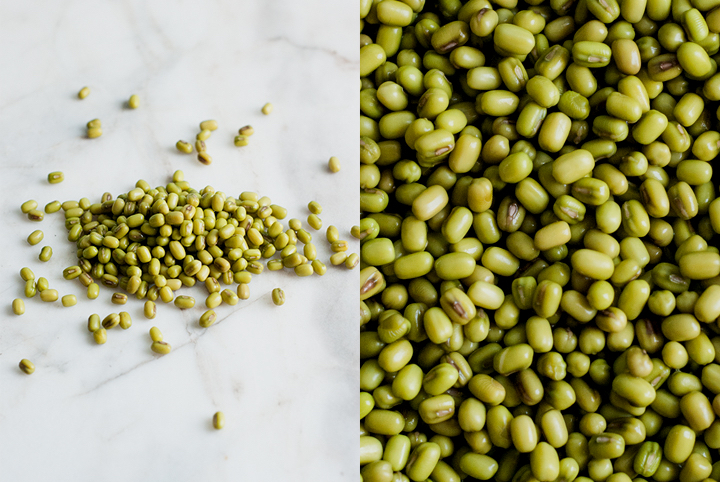
 Kimchi is hard to find in Portugal and even though I prefer these pancakes with it – because of the tangy and sharp flavours it gives to the batter – it’s possible to use finely chopped spring onions instead. Just bear in mind kimchi is the ingredient that gives them character, so a kimchi-free version of the pancakes won’t certainly taste as authentic. Having said this, I highly encourage you to make your own (recipe here!) – it’s quite easy and, if you haven’t tasted if before, you’ll be in for a wonderful taste experience that’s unusual for the western palate.
Kimchi is hard to find in Portugal and even though I prefer these pancakes with it – because of the tangy and sharp flavours it gives to the batter – it’s possible to use finely chopped spring onions instead. Just bear in mind kimchi is the ingredient that gives them character, so a kimchi-free version of the pancakes won’t certainly taste as authentic. Having said this, I highly encourage you to make your own (recipe here!) – it’s quite easy and, if you haven’t tasted if before, you’ll be in for a wonderful taste experience that’s unusual for the western palate.
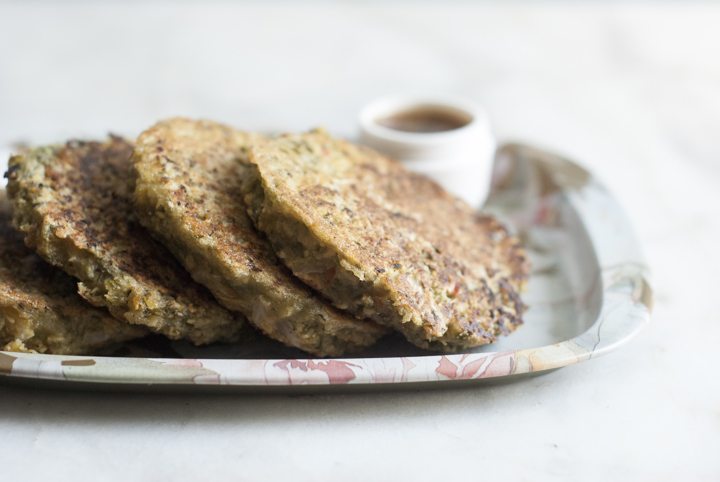
Bindaetteok (Korean Mung Bean Pancakes) with Sesame-Ginger Sauce
(makes 8-10 pancakes)
for the pancakes:
190 g / 1 cup mung beans, soaked overnight
1 teaspoon toasted sesame oil
1 teaspoon tamari sauce
½ teaspoon salt
60 ml / ¼ cup kimchi juice
60 ml / ¼ cup water
90 g / ½ cup kimchi
vegetable oil for shallow frying
for the sesame-ginger dipping sauce:
20 g fresh ginger
1 teaspoon toasted sesame oil
2 tablespoons tamari sauce
1 small garlic clove minced
1 tablespoon mirin
2 tablespoons water
1 tablespoon rice vinegar
Drain and rinse the beans. Add them to the bowl of a food processor along with the other pancake ingredients, except the kimchi. Process until a thick batter comes together – don’t worry if it doesn’t get perfectly smooth; it’s okay if it’s only coarsely pureed.
Heat a large skillet over medium high heat and add 1 to 2 tablespoons of oil, tilting the pan to ensure the oil is evenly distributed. When the oil is hot, but not smoking, drop 2 tablespoons of the batter at a time. Cook the pancakes for 2-3 minutes on each side or until golden brown.
For the sesame ginger sauce, peel and grate the ginger. Squeeze the ginger over a bowl to extract its juices and discard the pulp. Add the remaining sauce ingredients to the bowl and whisk everything together.
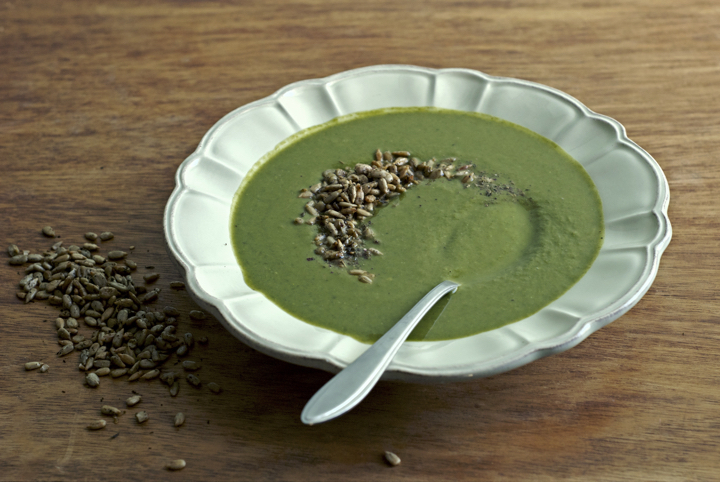
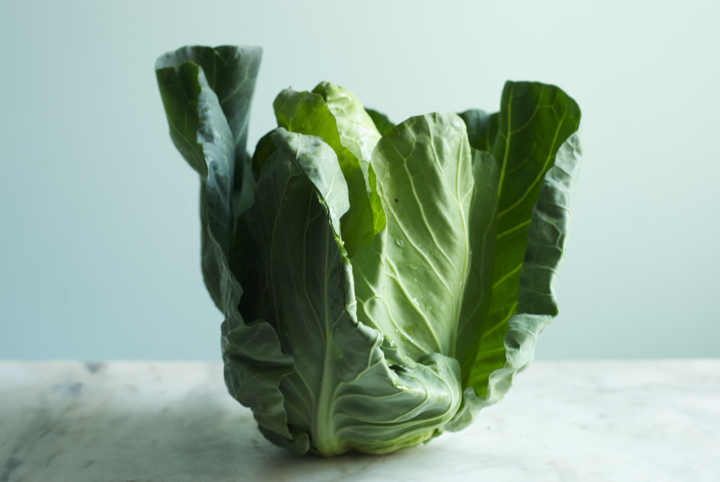

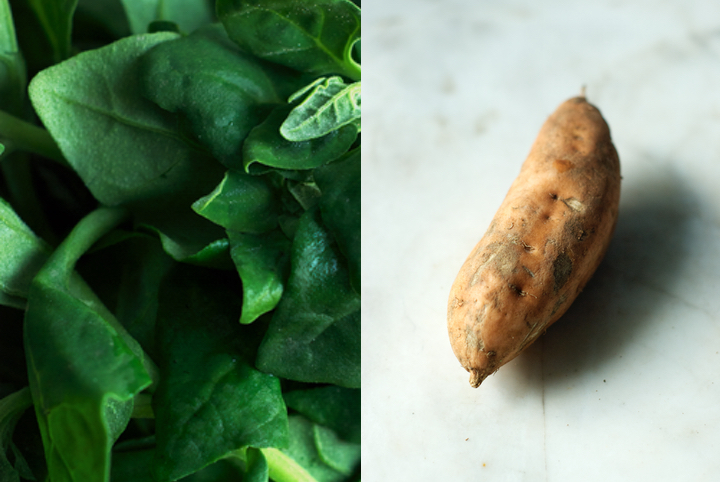
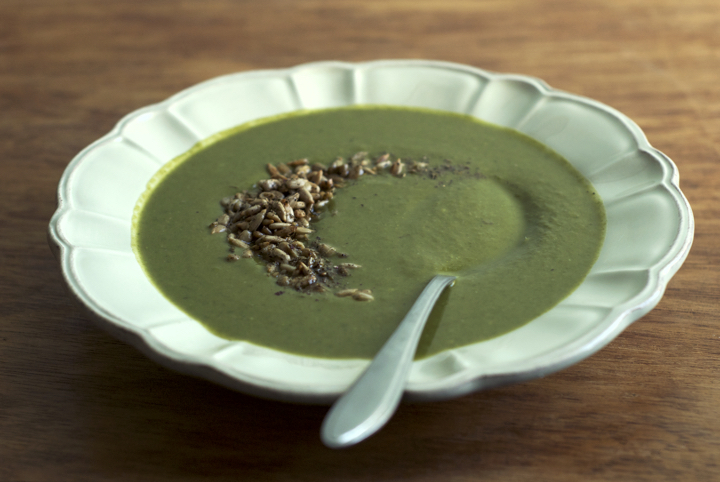
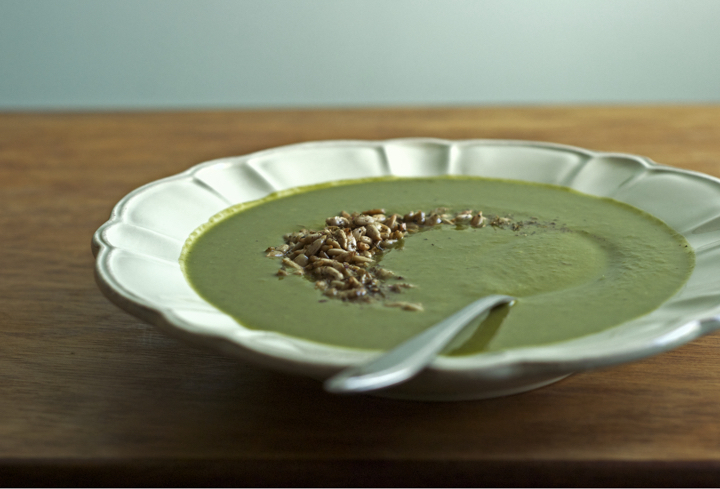
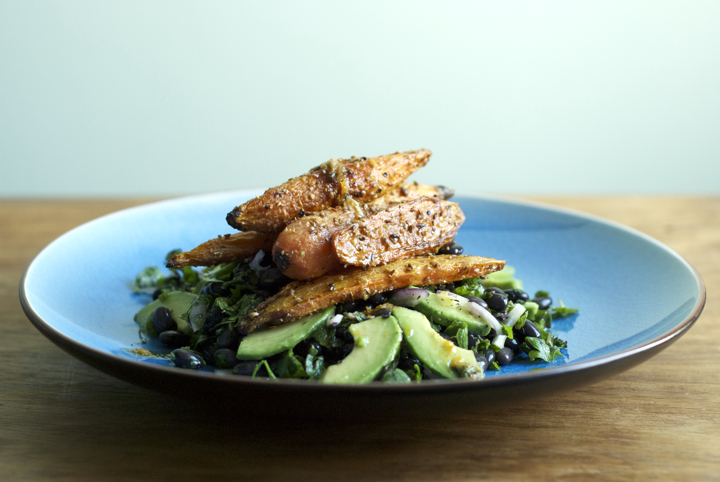


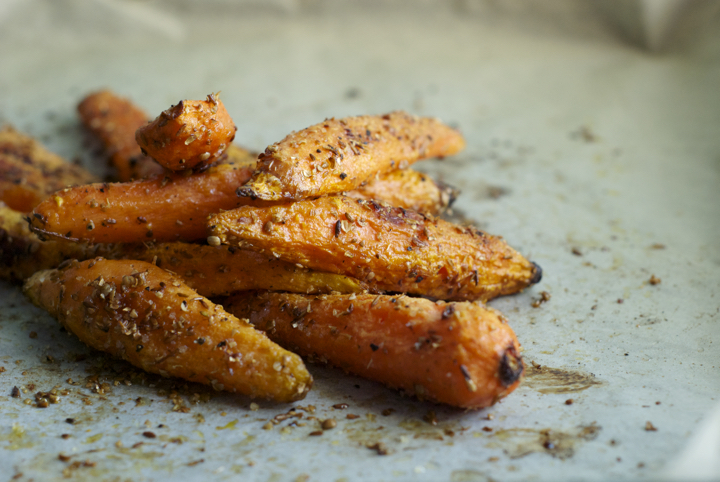
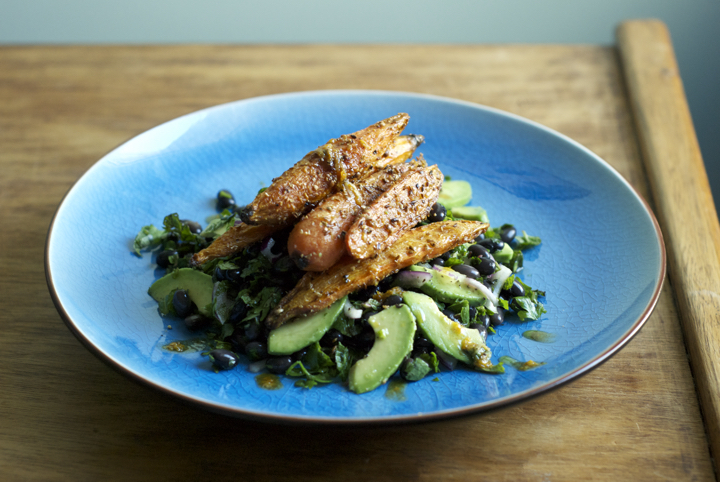
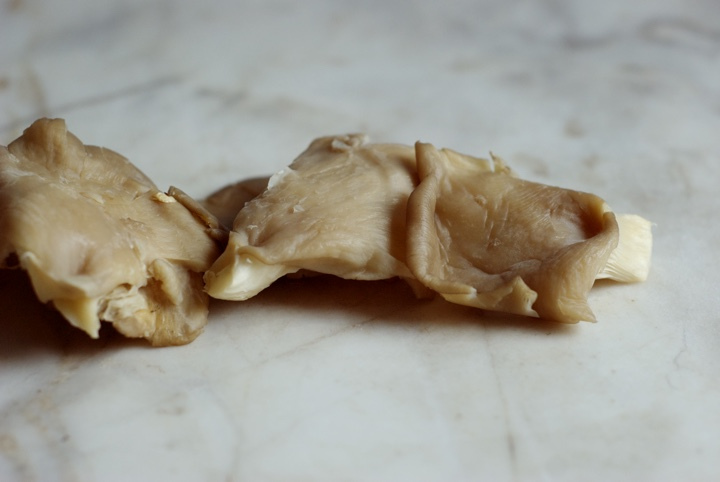
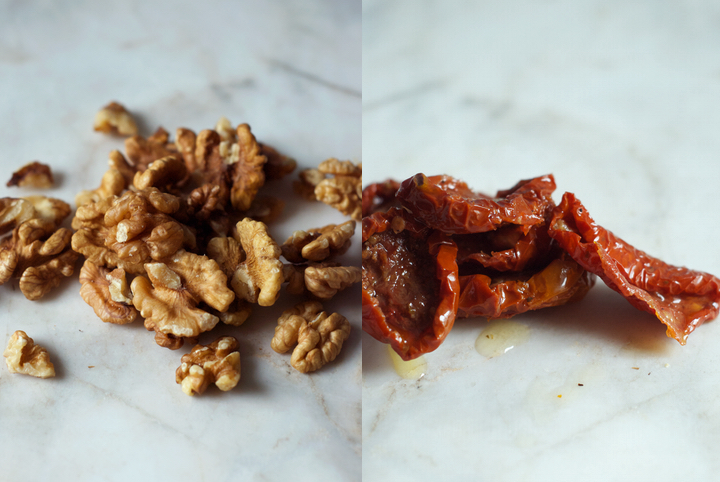

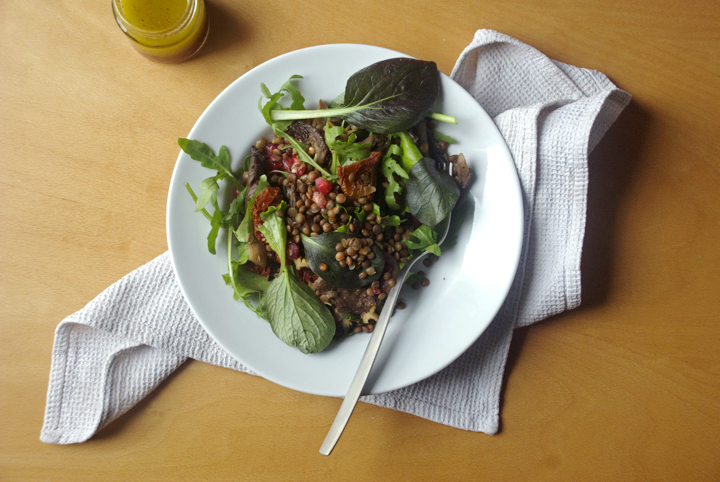

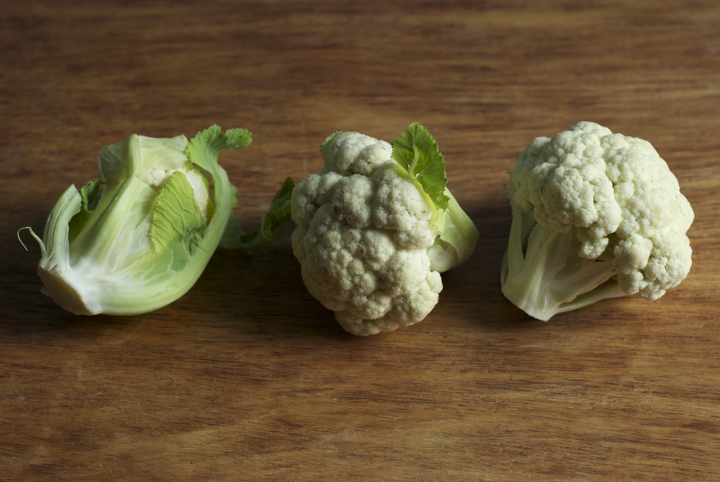

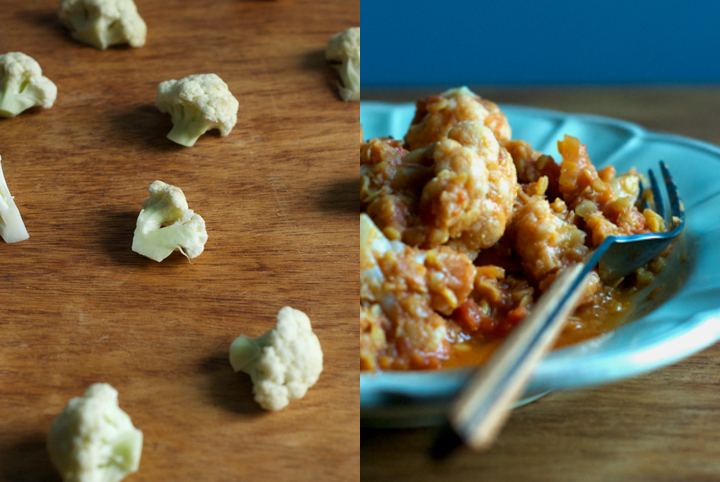

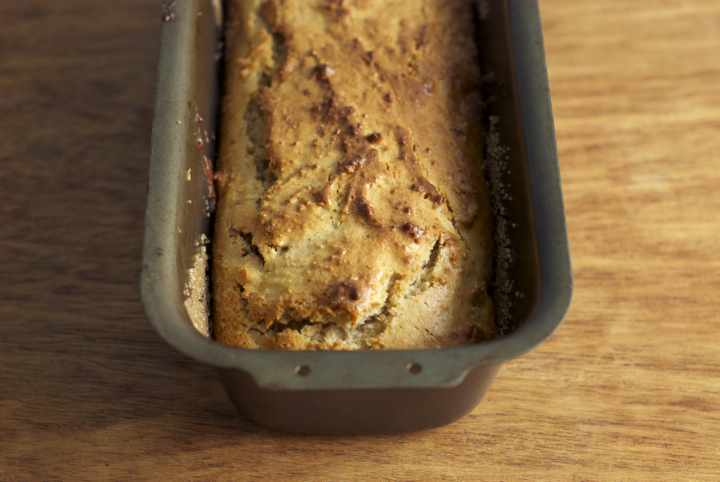
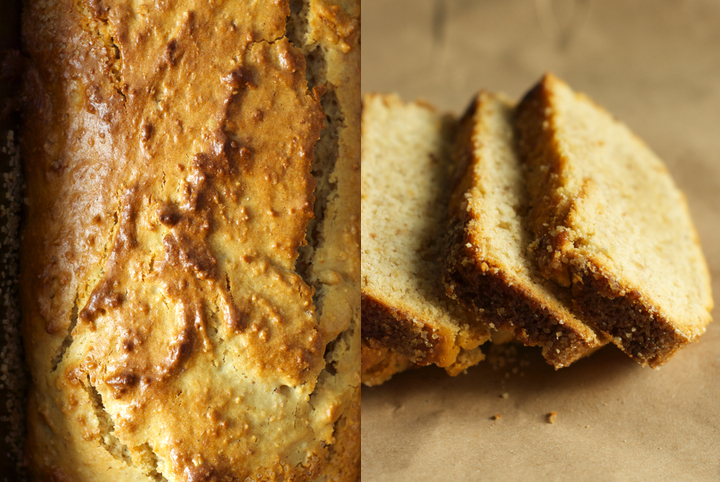

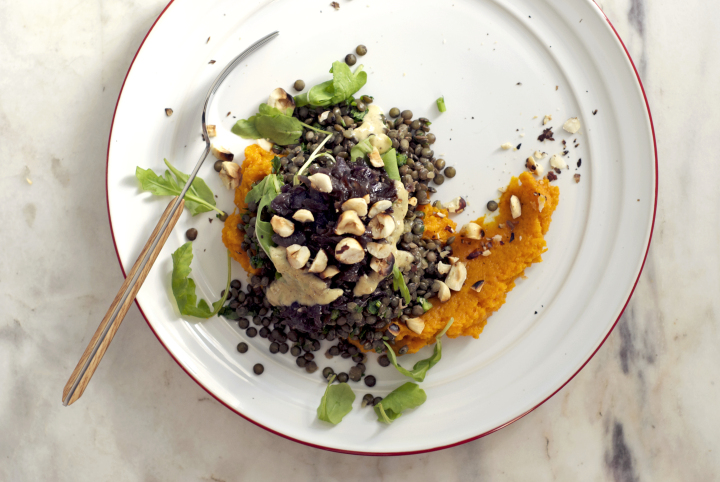

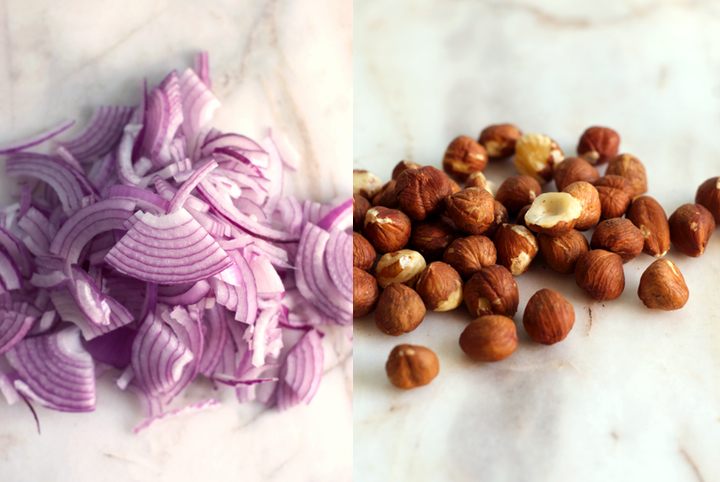
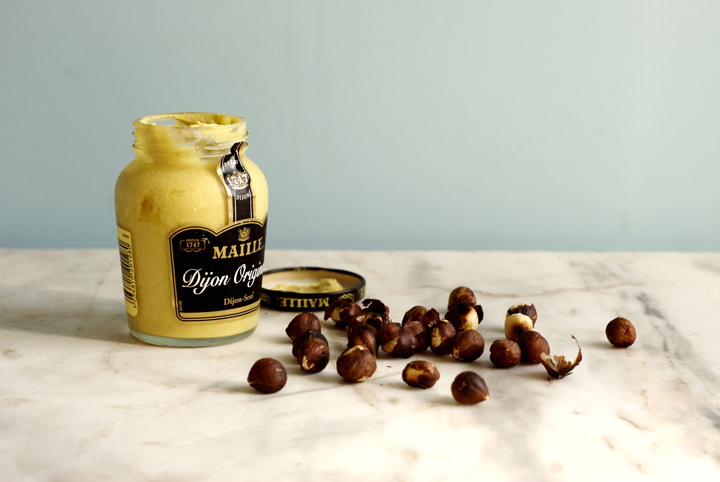

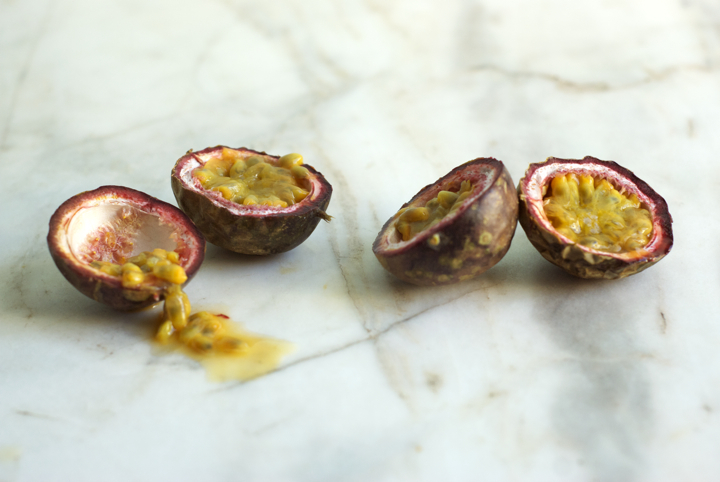


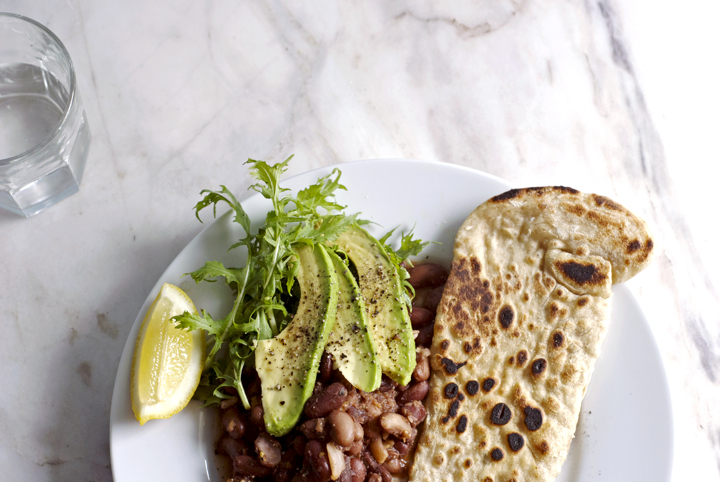
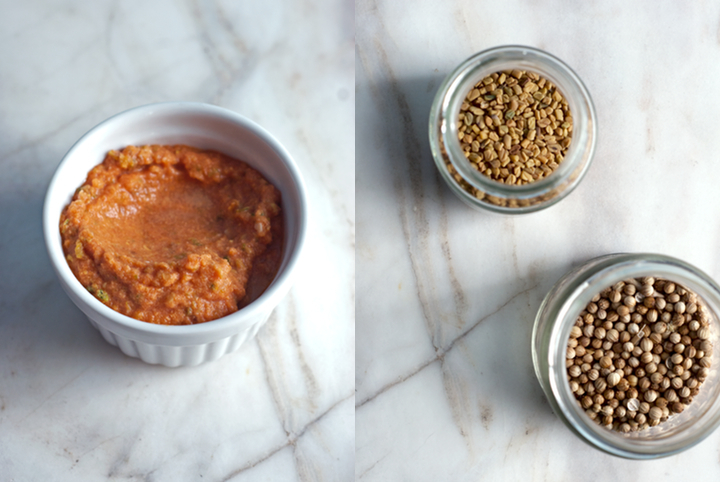

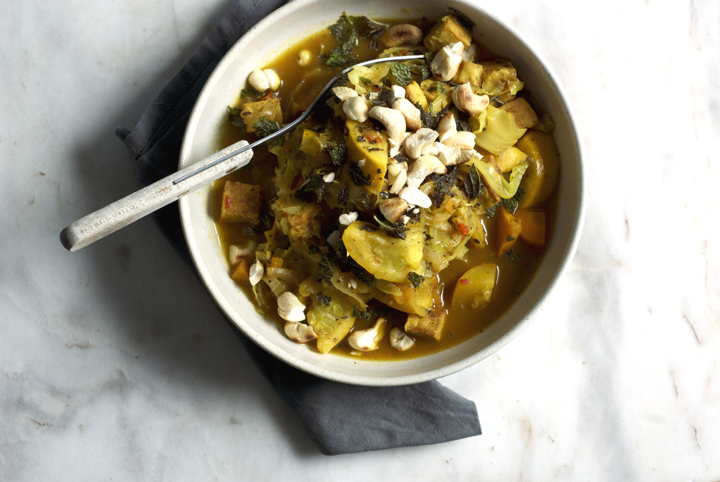
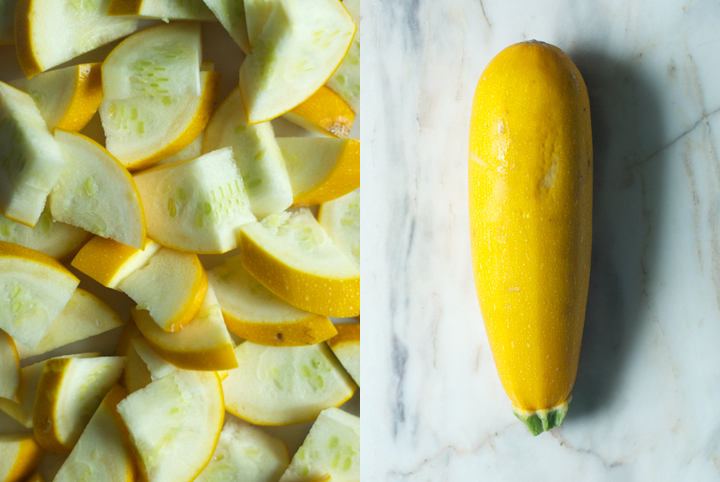
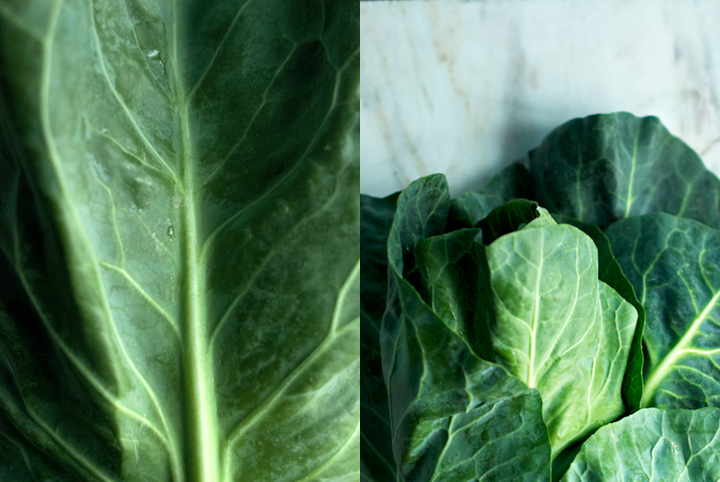
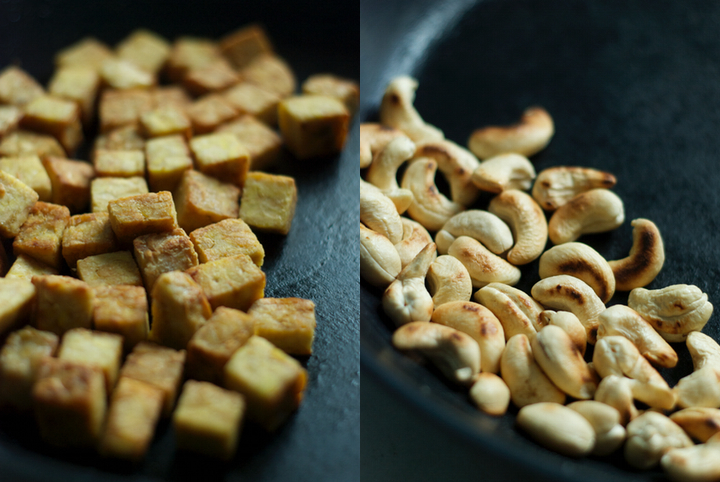
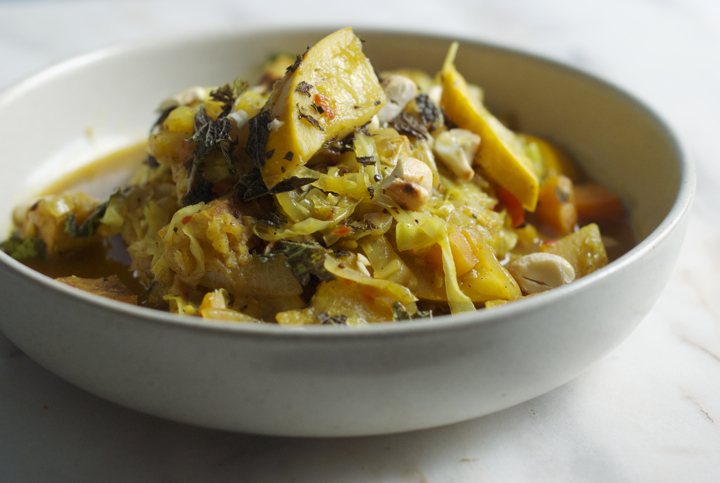
leave a comment